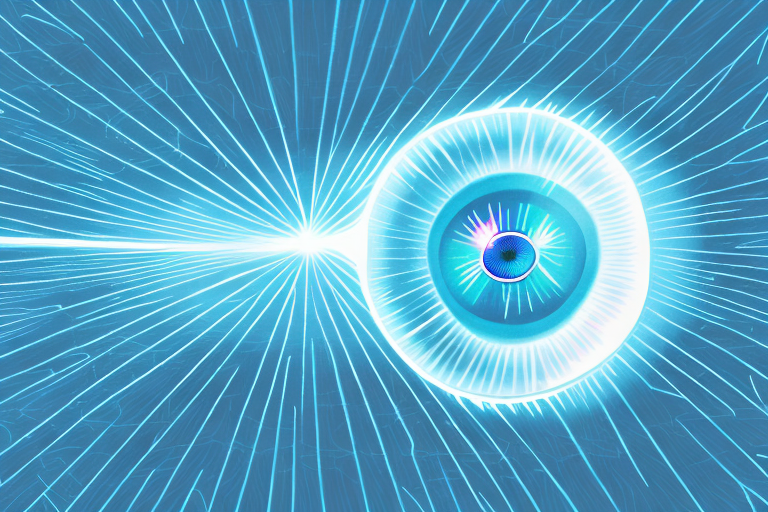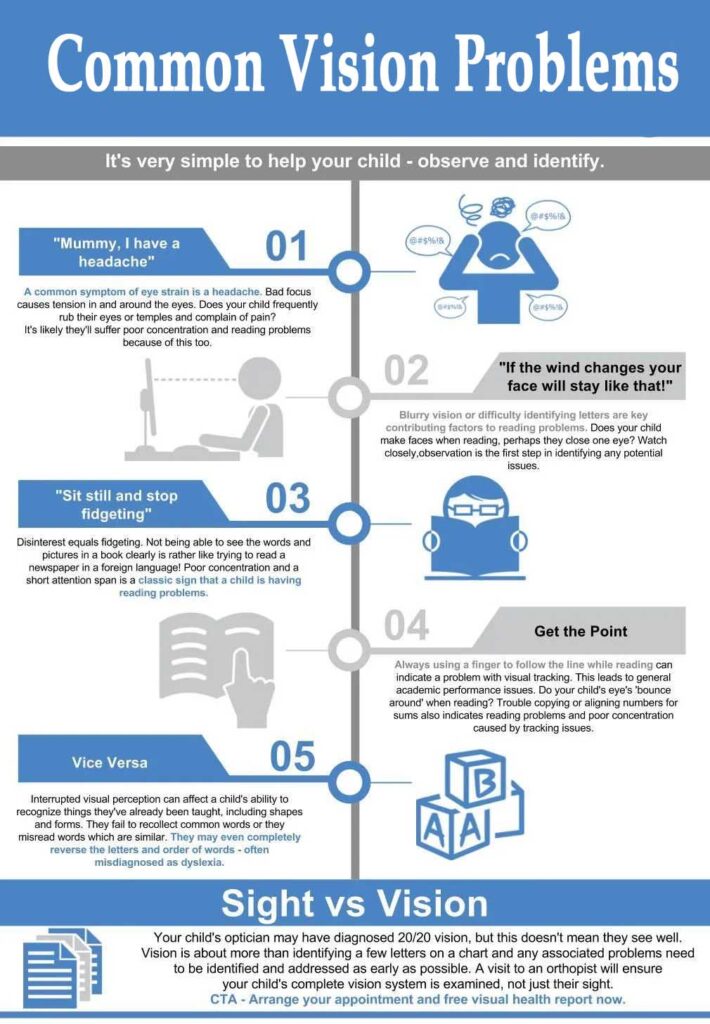LASIK, short for Laser-Assisted In Situ Keratomileusis, is a revolutionary procedure that has transformed the lives of millions of people by correcting their vision. In this article, we will delve into the science behind LASIK and explore how it works to address common vision problems such as myopia, hyperopia, and astigmatism.
Understanding Vision and Its Common Problems
Vision is a remarkable sensory process that allows us to perceive the world around us. It is a complex and intricate system that involves various components working together seamlessly. However, it is not uncommon for individuals to experience vision problems, which can interfere with their daily lives and overall well-being. To truly understand how LASIK corrects vision, it is crucial to familiarize ourselves with the anatomy of the human eye and the common vision problems it can encounter.

The Anatomy of the Human Eye
The human eye is a marvel of nature, an intricate organ that enables us to see and experience the beauty of the world. It consists of several interconnected parts, each with its own specific function, all working together harmoniously to facilitate vision.
One of the key components of the eye is the cornea, which serves as the clear outermost layer. The cornea plays a pivotal role in focusing light onto the retina, located at the back of the eye. It acts as a protective shield, shielding the delicate inner structures of the eye from harm while allowing light to pass through. This transparent dome-shaped structure is responsible for approximately two-thirds of the eye’s focusing power.
Moreover, the iris, the colored part of the eye, controls the amount of light entering the eye by adjusting the size of the pupil. The pupil, the black circular opening in the center of the iris, expands and contracts to regulate the amount of light reaching the retina.
Furthermore, the lens, located just behind the iris, plays a crucial role in focusing light onto the retina. It is a flexible, transparent structure that changes shape to adjust the eye’s focus, allowing us to see objects clearly at different distances. The lens works in conjunction with the cornea to bend incoming light rays, ensuring they converge precisely on the retina.
The retina, located at the back of the eye, is a thin layer of tissue that contains millions of light-sensitive cells called photoreceptors. These photoreceptors convert light into electrical signals, which are then transmitted to the brain through the optic nerve. The brain interprets these signals, allowing us to perceive and make sense of the visual world.
Finally, the optic nerve, often referred to as the “information highway” of the eye, carries these electrical signals from the retina to the brain, where they are processed and translated into the images we see.
Common Vision Problems: Myopia, Hyperopia, and Astigmatism

While the human eye is a remarkable organ, it is not immune to imperfections and abnormalities that can affect our vision. Three of the most prevalent vision problems are myopia (nearsightedness), hyperopia (farsightedness), and astigmatism. learn more about laser eye surgery at https://dcis.info/lasik-eye-surgery-is-it-the-right-choice-for-you/
Myopia, also known as nearsightedness, is a condition in which distant objects appear blurry, while close objects remain clear. It occurs when the cornea is too curved or the eyeball is too long. This causes light rays to focus in front of the retina, rather than directly on it. As a result, individuals with myopia may have difficulty seeing objects in the distance, such as road signs or chalkboards.
On the other hand, hyperopia, also known as farsightedness, is characterized by a cornea that is too flat or a shorter eyeball. This causes light rays to focus behind the retina, rather than directly on it. As a result, individuals with hyperopia may experience difficulty focusing on nearby objects, such as reading a book or using a computer.
Astigmatism is another common vision problem that arises from an irregularly shaped cornea. Instead of having a smooth, evenly curved cornea, individuals with astigmatism have a cornea that is more football-shaped. This irregular shape causes light to scatter and focus on multiple points, resulting in distorted or blurred vision at any distance.
It is important to note that these vision problems can vary in severity, with some individuals experiencing mild symptoms while others may face more significant challenges. Fortunately, advancements in medical technology, such as LASIK, have made it possible to correct these vision problems and enhance the quality of life for many individuals.
The Evolution of Vision Correction Techniques

The quest for clear vision has been a pursuit throughout human history, prompting the development of various vision correction techniques. From the use of glasses to the advent of contact lenses, these methods have aimed to provide individuals with the ability to see the world more clearly.
But how did we get to where we are today? Let’s take a closer look at the fascinating history of vision correction techniques.
From Glasses to Contact Lenses: A Brief History
Glasses have long been the traditional means of correcting vision problems. Dating back to the 13th century, the earliest spectacles consisted of convex and concave lenses that helped compensate for refractive errors. These early glasses were often made from primitive materials such as animal horn or wood.
As time went on, the design and materials used in glasses continued to evolve. In the 18th century, Benjamin Franklin introduced bifocal lenses, which allowed individuals with both nearsightedness and farsightedness to see clearly at different distances. This innovation revolutionized the world of vision correction.
Over time, advancements in lens technology led to the creation of contact lenses, which offered a more natural visual experience and freedom from wearing glasses. The first contact lenses, made from glass, were introduced in the late 19th century. However, they were uncomfortable to wear and posed a risk of eye injury.
It wasn’t until the 20th century that contact lenses truly became a viable option for vision correction. In the 1930s, plastic lenses were developed, making contact lenses more comfortable and safer to wear. These lenses were initially hard and rigid, but in the 1970s, soft contact lenses made from hydrogel materials were introduced, providing even greater comfort and flexibility.
The Advent of Laser Eye Surgery
While glasses and contact lenses have proven effective in improving vision, they are not ideal long-term solutions. In the late 20th century, laser eye surgery emerged as a groundbreaking alternative. LASIK, in particular, quickly rose to prominence as a safe and effective method for permanently correcting vision problems.
LASIK, which stands for Laser-Assisted in Situ Keratomileusis, involves reshaping the cornea using a laser to correct refractive errors such as nearsightedness, farsightedness, and astigmatism. The procedure is quick, typically taking only a few minutes per eye, and offers a high success rate.
Since its introduction in the 1990s, LASIK has continued to evolve and improve. Advanced technologies such as wavefront-guided LASIK and femtosecond lasers have enhanced the precision and safety of the procedure, allowing for better visual outcomes and faster recovery times.
However, it’s important to note that not everyone is a suitable candidate for LASIK. Factors such as age, corneal thickness, and the presence of certain eye conditions may affect eligibility. Therefore, it’s crucial to consult with an experienced eye surgeon to determine the most appropriate vision correction option.
In conclusion, the evolution of vision correction techniques has come a long way, from the invention of glasses to the development of contact lenses and the advent of laser eye surgery. Each advancement has brought us closer to achieving clearer and more natural vision. As technology continues to progress, it’s exciting to imagine what the future holds for vision correction.
The Science of LASIK
The science behind LASIK lies in its ability to reshape the cornea, restoring its normal curvature and optimizing its refractive capabilities. By doing so, LASIK directly addresses the root cause of common vision problems, enabling individuals to achieve clear vision without relying on external aids such as glasses or contact lenses.
The Role of the Cornea in Vision
The cornea, as the outermost layer of the eye, plays a critical role in vision. It acts as a transparent window, allowing light to enter the eye and accurately focus onto the retina. Any abnormalities in the cornea’s shape can disrupt this process and result in distorted or blurry vision.
How LASIK Reshapes the Cornea
LASIK works by reshaping the cornea to correct its curvature and eliminate refractive errors. During the LASIK procedure, an ophthalmologist uses a specialized laser to create a thin flap in the cornea. This flap is then lifted, and the underlying corneal tissue is sculpted using another laser to remove precise amounts of tissue, improving its shape and subsequent focusing abilities. The flap is carefully repositioned, creating a natural bandage that aids in the healing process.
The LASIK Procedure: A Step-by-Step Guide
The LASIK procedure involves several distinct steps, each designed to ensure the best possible outcome for the patient. Let’s explore these steps in more detail:
Preoperative Assessments and Preparations
Prior to undergoing LASIK, patients undergo a thorough assessment to determine their candidacy for the procedure. This assessment includes detailed measurements of their cornea, evaluation of their overall eye health, and consultation with the ophthalmologist. Preoperative preparations might involve fasting prior to the surgery, taking prescribed medication, or abstaining from wearing contact lenses for a specific period of time.
During the Surgery: What Happens?
On the day of the surgery, the patient arrives at the LASIK center or hospital and is prepared for the procedure. Local anesthesia is administered to numb the eye, ensuring a painless experience. Once the eye is numbed, the surgeon creates the corneal flap using an automated microkeratome or a femtosecond laser. After the flap is lifted, the laser reshaping process begins, precisely sculpting the cornea to the desired shape. This usually takes only a matter of minutes per eye. Finally, the surgeon repositions the flap, which adheres naturally without the need for stitches.
Postoperative Care and Recovery
Following LASIK, patients are provided with detailed instructions for postoperative care and are prescribed eye drops to prevent infection and aid in healing. It is vital to adhere to these instructions, including avoiding rubbing or touching the eyes, protecting them from exposure to water and irritants, and attending follow-up appointments with the surgeon to ensure proper healing and monitor progress.
The Effectiveness and Safety of LASIK
Over the years, LASIK has demonstrated exceptional effectiveness and safety in correcting vision problems. Countless studies have shown high success rates and long-term satisfaction among LASIK patients.
Success Rates and Long-Term Results
Studies indicate that LASIK achieves excellent visual outcomes for the majority of patients. The procedure has an impressive success rate, with most individuals achieving 20/20 vision or better. Furthermore, the results are typically stable over the long term, providing lasting improvements in visual acuity and quality of life.
Potential Risks and Complications
While LASIK is generally safe, as with any surgical procedure, there are potential risks and complications to be aware of. These may include dry eyes, halos or glare around lights, fluctuating vision, or, in rare cases, infection or corneal abnormalities. However, with advancements in technology and highly skilled surgeons, the occurrence of these complications has significantly diminished.
In conclusion, LASIK represents a remarkable fusion of technology and medical expertise that has revolutionized the field of vision correction. By understanding the science behind LASIK, we can appreciate its ability to correct common vision problems and provide individuals with a newfound clarity of sight. With its impressive effectiveness and long-term safety, LASIK continues to pave the way for a future where clear vision is accessible to all.



